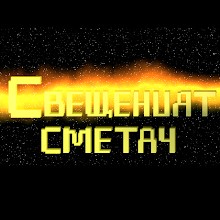Comments regarding a recent talk from Lex Fridman's AI podcast with Jeff Hawkins from Numenta:
https://youtu.be/-EVqrDlAqYo
Conceptually it seems Hawkins' approach and ideas still match many of the insights and direction in my "Theory of Universe and Mind" works from the early 2000s (published before "On Intelligence" in "Sacred Computer" - "Свещеният сметач") and afterwards.
In addition to: not following the mainstream research which is doing minimal changes which lead to minimal progress of some benchmarks which is assumed good enough by the mainstream researchers, published in journals and conferences etc. Rather radical jumps are needed and recently "even the godfathers in the field agreed"...
The building of deep structures, the play of resolution of perception and control, coordinate spaces as a basis for AGI ("reference frames"), attention traversal of different scales ("time scales" - resolution of perception and causation within the time dimension), introspection as a legitimate method for AGI research, these are my "behavintrospective" studies; that there is no separate training and inference stage as in current NN, it's supposed to be a part of one process. See CogAlg.
One difference though - he dismisses the interdisciplinary research as helpful (although I think they actually do such research). "Human-centered AI" is disliked, because it suggests study of emotions and other human traits which are not needed for the AI, "let's just study the brain etc.".
IMO the interdisciplinary minds see and understand easier shortcuts while others could eventually find these paths by laborious digging and wandering in seas of empirical data and brute-force search.
https://youtu.be/-EVqrDlAqYo?t=5141
~ 1:25 h
"The new steps should be orthogonal ..." (no little changes "1.1% progress" on standard benchmarks - see Todor's "What's wrong with Natural Language Processing" series)
1:25:41
The Billion dollar computing college of MIT, interdisciplinary, from this fall:
http://news.mit.edu/2018/mit-reshapes-itself-stephen-schwarzman-college-of-computing-1015
https://fortune.com/2018/10/16/mit-college-computing-artificial-intelligence-billion-dollars/
Well: 9-10 years after the course/research direction program that I announced in late 2009, presented in spring 2010 at Plovdiv University, with practically zero funding, besides the opportunity to present it at my University (thanks to Mancho Manev and Plovdiv University).















